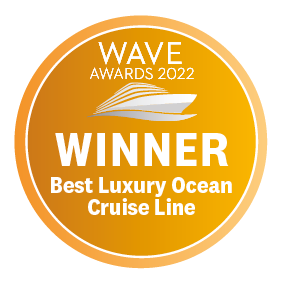Navigate The World

To perfect luxury, Seven Seas Splendor™ elevates every detail, combining exquisite style and comfort with exemplary service, superb cuisine and all-balcony suites. Get to know this newest ship in the Regent Seven Seas Cruises® fleet.
Regent is almost in a class of its own, offering luxury on an incredible scale with original Picassos, an acre of marble and 500 chandeliers aboard Seven Seas Explorer, Seven Seas Splendor and Seven Seas Grandeur.
The most opulent suites in all three - at around £8,000 a night - feature grand pianos, private bars and even their own spas. The signature Compass Rose restaurant is an absolute must-see.


Cozumel is the largest island in Mexico’s Yucatan peninsula and a microcosm of the very best that the Mayan Riviera has to offer: think sugar white beaches, a jungle rich with Mayan ruins and some of the world’s most impressive diving sites teeming with technicolour fish. This once sleepy island has come a long way from its humble fishing roots but remains far less commercialised than neighbouring Playa del Carmen in Cancun, just across the bay. Removed from the raucous pace of the mainland by around 20km of Caribbean Sea, a cruise to Cozumel offers a peaceful respite and a leisurely chance to relax into the rhythm of the tropics.




























































Spirited Singapore in Southeast Asia is the world’s only sovereign island city-state. The nation’s contemporary identity as a city-island hybrid stems from its colonial history as a British-controlled trading territory, founded by Sir Stamford Raffles in 1819. Today, an amalgamation of multiracial influences give rise to Singapore’s diverse culture - primarily a fusion of Malay, Indian, Chinese and Western traditions. This rich multiculturalism is one of Singapore’s top selling points, drawing in visitors from all over the world who are keen to explore the island’s divergent neighbourhoods, from the colourful pagodas of Chinatown to the ornate temples of Little India. Singapore’s natural landscape is as varied as its culture, with stark contrasts between the luscious, tropical Singapore Botanic Garden and the perfectly sculpted, futuristic “Supertrees” of Gardens by the Bay. A quirky mishmash of old and new, Singapore is without a doubt one of Asia’s most unique and memorable islands with which travellers cannot help but fall in love along a Singapore cruise.




The largest port city and capital of Sri Lanka, Colombo is situated on Kelani River's southwestern shores. As well as being a major commercial city, being one of Asia’s industrial and financial hubs, Colombo also has a wealth of cultural attractions that make it the perfect port of call on a Far East or Asia cruise, from numerous churches and monuments to restaurants and shopping malls – offering the perfect blend of history and modernity.





















The lively port town of Limassol on Cyprus’ sun-drenched southern coast has become a holiday hotspot in recent years – voted the world’s third most up-and-coming destination in 2019 – and for good reason. The popular Mediterranean tourist resort offers something for the whole family, from white sandy beaches, a water park and zoo to historic and archaeological sites, quaint tavernas and wonderful local wine.
The largest island of the Dodecanese and the fourth-largest Greek island, Rhodes has become a hugely popular summer holiday destination, with visitors drawn to the island for its historic charm, wonderful beaches and sensational Greek food. The bustling Unesco-listed old town, filled with a plethora of restaurants, shops, bars and historic sites, attracts thousands of tourists each year, as does Faliraki, the seaside resort famed for its lively nightlife. Alternatively, history lovers tend to flock to the Cyclades-style village of Lindos, home to the majestic Acropolis and the 14th-century Castle of the Knights of St John.




Italy's vibrant capital lives in the present, but no other city on earth evokes its past so powerfully. For over 2,500 years, emperors, popes, artists, and common citizens have left their mark here.
Archaeological remains from ancient Rome, art-stuffed churches, and the treasures of Vatican City vie for your attention, but Rome is also a wonderful place to practice the Italian-perfected il dolce far niente, the sweet art of idleness. Your most memorable experiences may include sitting at a caffè in the Campo de' Fiori or strolling in a beguiling piazza.

To perfect luxury, Seven Seas Splendor™ elevates every detail, combining exquisite style and comfort with exemplary service, superb cuisine and all-balcony suites. Get to know this newest ship in the Regent Seven Seas Cruises® fleet.

